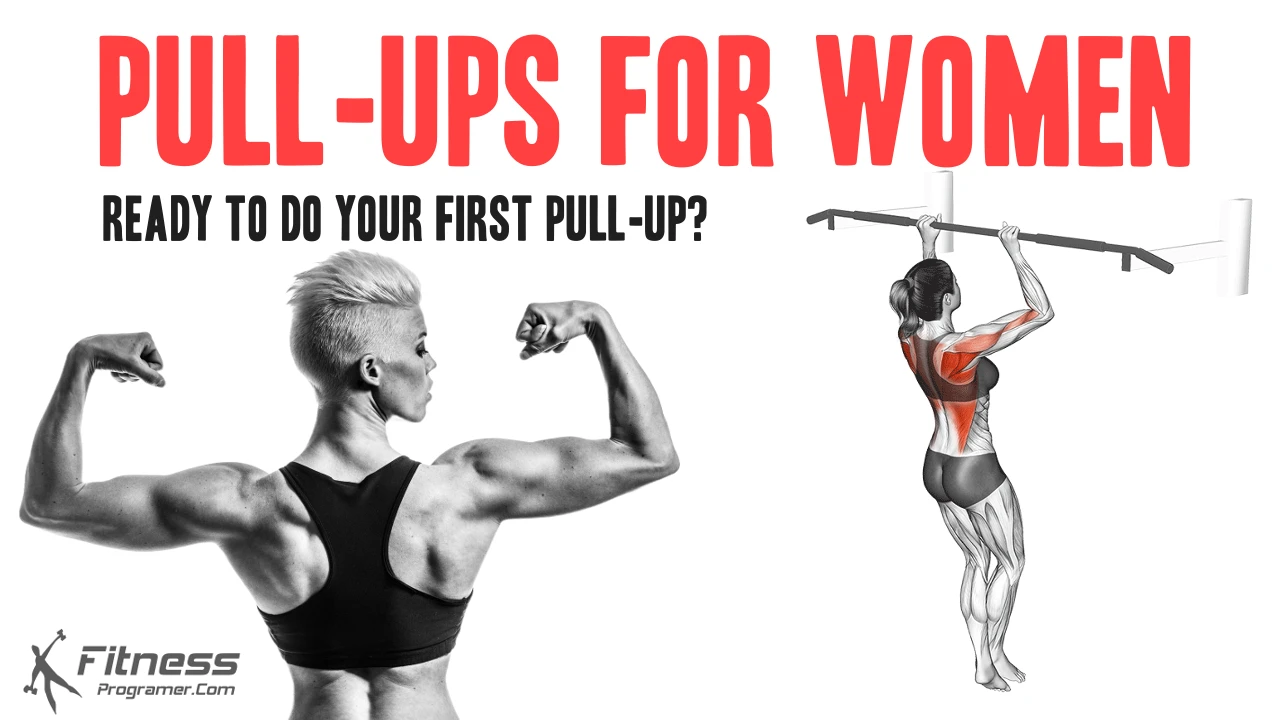Contents
If you’ve spent any time on social media lately, you’ve likely seen an endless stream of hip-thrusts, glute bridges, and banded lateral walks. As women, we’ve become incredibly familiar with hip-dominant exercises—and for good reason. Strong glutes are essential for lower-body power, stability, and yes, aesthetic appeal.
But there’s a critical piece missing from the puzzle: upper body strength, especially in the back and arms. One of the most powerful, transformative exercises that women often overlook is the pull-up. Not only does it sculpt the back, shoulders, and arms, but it also strengthens the core, improves posture, and boosts functional strength.
Why Do Women Find Pull-Ups Difficult?
Pull-ups are a compound, bodyweight movement that requires a high level of relative strength—how strong you are compared to your body weight. On average, women tend to have less upper-body muscle mass and testosterone than men, which naturally makes the movement more challenging at first.
Other factors include:
- Biomechanical leverage: Women typically have a higher body fat percentage and different fat distribution (more in the hips and thighs), which shifts the center of mass.
- Lack of training: Many women haven’t focused on upper-body pulling movements in their training history, making pull-ups feel foreign.
- Psychological barriers: Pull-ups are often seen as a “male” movement or “too hard,” which creates a mental block before the first rep is even attempted.
But the truth is this: every woman can learn to do a pull-up with the right progression, programming, and mindset.
Benefits of Pull-Ups for Women
1. Improved Posture
Pull-ups strengthen the latissimus dorsi, rhomboids, trapezius, and rear deltoids—all key muscles for scapular stability and upright posture. In a world dominated by screens and slouching, pull-ups can literally help you stand taller.
2. Upper Body Definition
Pull-ups target the back, biceps, forearms, shoulders, and core. When performed consistently, they lead to a toned, athletic upper body without the need for endless isolation exercises.
3. Core Strength
A strict pull-up requires full-body tension, particularly from the core. Pull-up training enhances deep core stability, which improves posture, athletic performance, and injury prevention.
4. Functional Strength
Pull-ups translate to real-world strength: lifting children, climbing, carrying groceries, and moving furniture. This functional aspect is empowering for everyday life.
5. Hormonal and Mental Health Benefits
Strength training, including pull-ups, increases endorphins, supports hormonal balance, and enhances confidence. Women who conquer their first pull-up often describe it as a mental and emotional milestone.
6. Caloric Burn and Metabolism
Because pull-ups recruit multiple large muscle groups, they increase energy expenditure both during and after your workout, helping with fat loss and metabolic health.
How Women Can Get Better at Pull-Ups
1. Train Assisted Pull-Ups First
Use resistance bands, machine-assisted pull-ups, or partner assistance to reduce the load and build strength through the full range of motion.
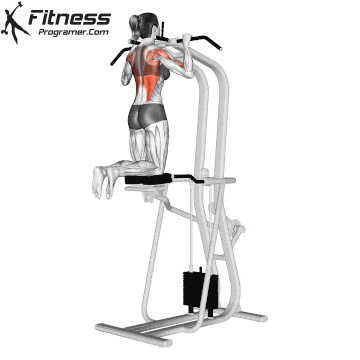
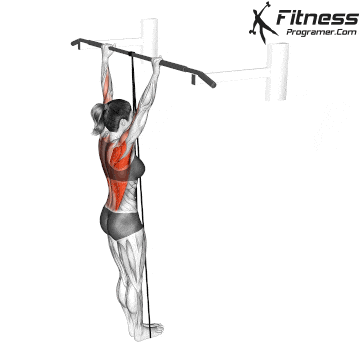
2. Improve Grip Strength
Dead hangs, farmer’s carries, and towel hangs help build the forearm and hand strength necessary to maintain a solid grip on the bar.
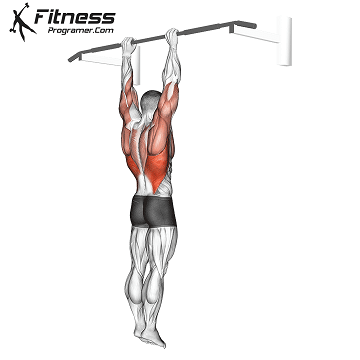
3. Strengthen the Upper Body
Include exercises like:
- Lat pulldowns
- Inverted rows
- Barbell rows or Dumbbell rows
- Face pulls
- Negative (eccentric) pull-ups
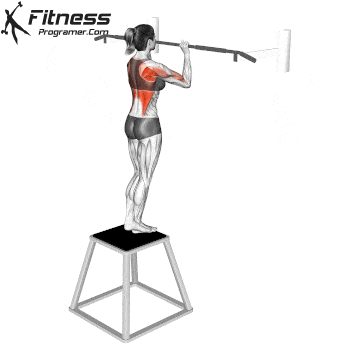
4. Focus on Pushing Your Strength
Slowly start to build your strength by doing brachialis pull-ups or half pull-ups.
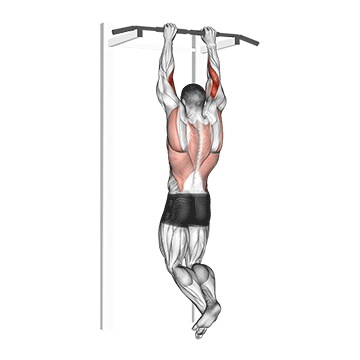
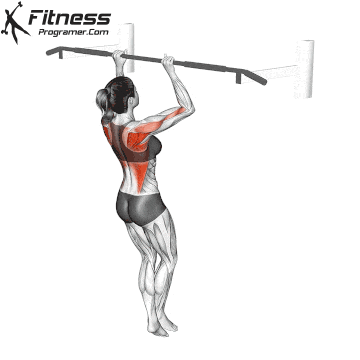
5. Use Proper Form
- Start from a dead hang with shoulders engaged (active hang).
- Pull your chest toward the bar, not just your chin.
- Avoid using momentum (unless performing kipping pull-ups in CrossFit-specific settings).
Sample Pull-Up Progression Workout for Women
Frequency: 2–3 times per week
Rest: 60–90 seconds between sets
Warm-Up (5–10 minutes)
- Arm circles
- Wall Slides
- Banded Row (2 x 10)
- Banded Alternating Lat Pulldown (2 x 10)

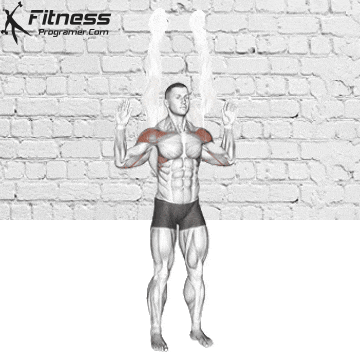

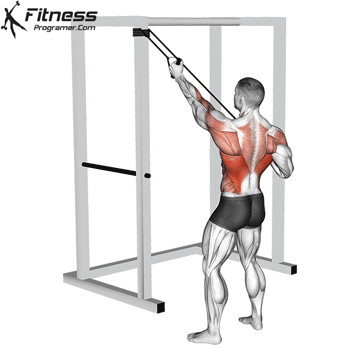
Week 1: Strength Circuit
Perform 3 rounds:
- Assisted Pull-Ups (band or machine) – 6–8 reps
- Inverted Rows – 10–12 reps
- Lat Pulldown (wide grip) – 10 reps
- Face Pull – 10 reps



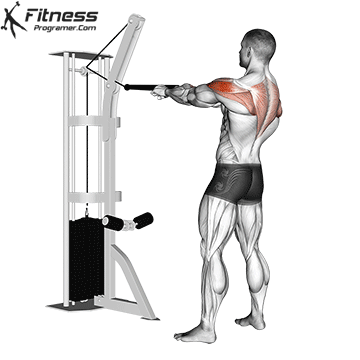
Week 2: Grip Circuit
Perform 3 rounds:
- Warm-up
- Dead hangs (1 x 20–40 seconds)
- Inverted Rows – 10–12 reps
- Dumbbell Row – 12 reps
- Lat Pulldown (wide grip) – 12 reps
- Face Pull – 10 reps
Week 3: Gaining Skills
- Warm-up
- Isometric Pull-up – (3x 10–20 seconds)
- Inverted Rows – 2-3 x 10
- Barbell Row – 2-3 x 10 reps
- Lat Pulldown (wide grip) – 3 x 10 reps
- Face Pull – 3 x 10 reps
Week 4: Pull-Up Practice
- Warm-up
- Half Pull-Ups (eccentrics focused): 3–4 sets of 3–5 reps / Lower slowly (3–5 seconds) from bar position
- Inverted Rows – 3 x 8-10
- Barbell Row – 3 x 8-10 reps
- Lat Pulldown (wide grip) – 3 x 10 reps
- Face Pull – 3 x 10 reps
Week 5: Master the Pull-Up
- Warm-up
- Pull-up – 2 x max
- Inverted Rows – 3 x 10
- Barbell Row – 3 x 10-12 reps
- Lat Pulldown (wide grip) – 3 x 10-12 reps
- Face Pull – 3 x 10-12 reps
How to Incorporate Pull-Ups into Your Weekly Routine
| Goal | Weekly Strategy |
|---|---|
| Beginner | Pull-up progressions 2x/week + accessory back and core work |
| Muscle Gain (Hypertrophy) | Pull-up variations (weighted or volume) 3x/week |
| Functional Fitness | Combine pull-ups with push-ups, rows, and carries in circuits |
| Strength Focused | Use weighted pull-ups and lower rep ranges (4–6 reps) |
| Fat Loss/Conditioning | Add pull-ups to HIIT or circuit workouts for metabolic impact |
Final Thoughts: Reclaim Upper Body Strength as a Woman
Pull-ups are not just for men. They’re for women who want strength, power, posture, and confidence. While they may be hard at first, mastering them is one of the most empowering experiences you can have in the gym. It’s time to stop skipping back day and start building a body that moves, lifts, and lives strong—top to bottom.
Keywords
- pull-ups for women
- benefits of pull-ups
- female strength training
- back workouts for women
- how women can do pull-ups
- upper body exercises for women
- pull-up workout female
- why women struggle with pull-ups
References
- Bambaeichi, E. et al. (2005). “Gender differences in muscle performance and fatigue resistance during high-intensity intermittent exercise.” European Journal of Applied Physiology, 94(3), 325–331.
- Ebben, W. P., & Blackard, D. O. (2001). “Strength and conditioning practices of National Football League strength and conditioning coaches.” Journal of Strength and Conditioning Research, 15(1), 48–58.
- Westcott, W. L. (2012). “Resistance training is medicine: effects of strength training on health.” Current Sports Medicine Reports, 11(4), 209–216.
- Schoenfeld, B. J. (2010). “The mechanisms of muscle hypertrophy and their application to resistance training.” Journal of Strength and Conditioning Research, 24(10), 2857–2872.

